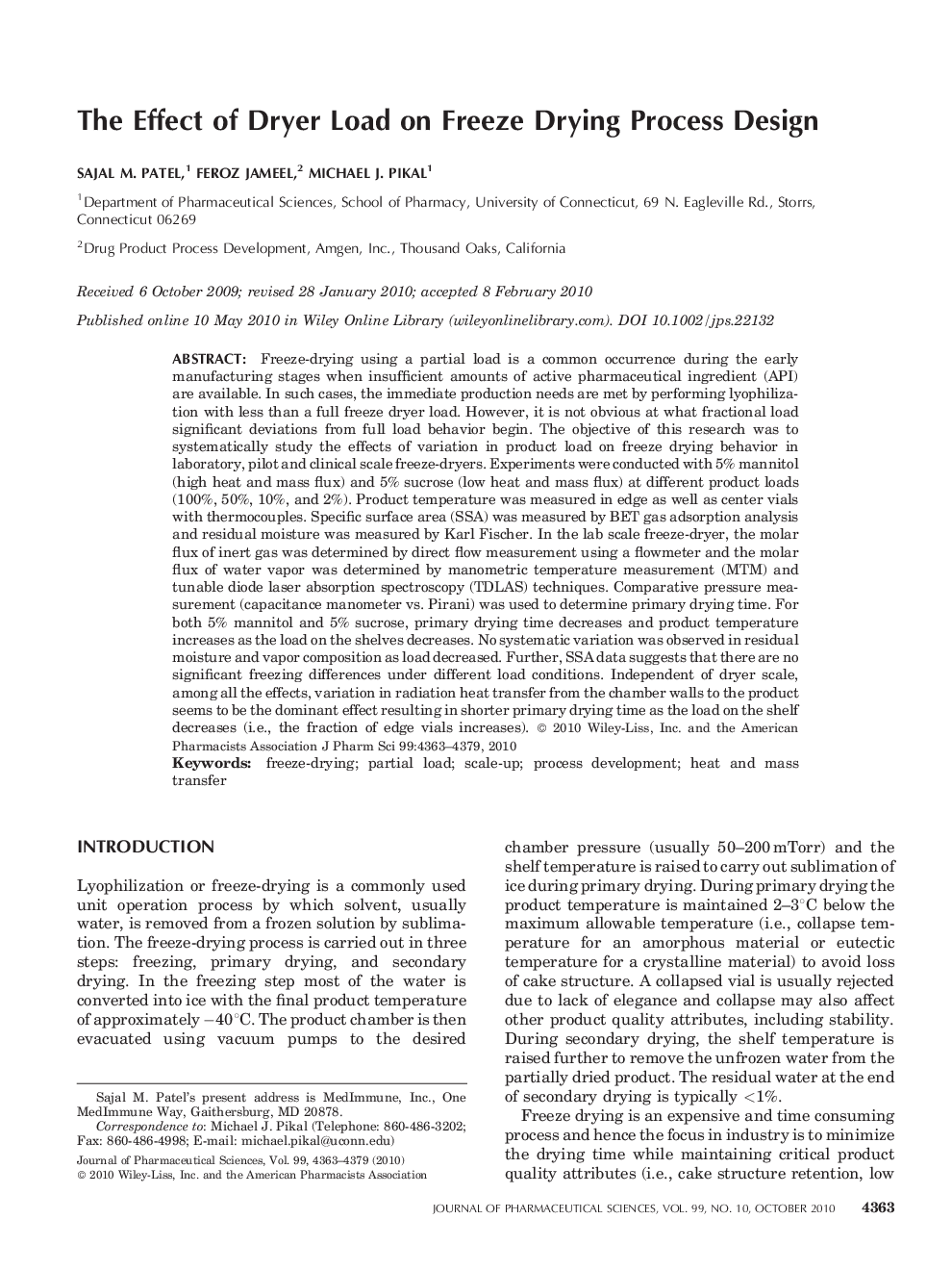| Article ID | Journal | Published Year | Pages | File Type |
|---|---|---|---|---|
| 2487075 | Journal of Pharmaceutical Sciences | 2010 | 17 Pages |
Abstract
Freeze-drying using a partial load is a common occurrence during the early manufacturing stages when insufficient amounts of active pharmaceutical ingredient (API) are available. In such cases, the immediate production needs are met by performing lyophiliza-tion with less than a full freeze dryer load. However, it is not obvious at what fractional load significant deviations from full load behavior begin. The objective of this research was to systematically study the effects of variation in product load on freeze drying behavior in laboratory, pilot and clinical scale freeze-dryers. Experiments were conducted with 5% mannitol (high heat and mass flux) and 5% sucrose (low heat and mass flux) at different product loads (100%, 50%, 10%, and 2%). Product temperature was measured in edge as well as center vials with thermocouples. Specific surface area (SSA) was measured by BET gas adsorption analysis and residual moisture was measured by Karl Fischer. In the lab scale freeze-dryer, the molar flux of inert gas was determined by direct flow measurement using a flowmeter and the molar flux of water vapor was determined by manometric temperature measurement (MTM) and tunable diode laser absorption spectroscopy (TDLAS) techniques. Comparative pressure measurement (capacitance manometer vs. Pirani) was used to determine primary drying time. For both 5% mannitol and 5% sucrose, primary drying time decreases and product temperature increases as the load on the shelves decreases. No systematic variation was observed in residual moisture and vapor composition as load decreased. Further, SSA data suggests that there are no significant freezing differences under different load conditions. Independent of dryer scale, among all the effects, variation in radiation heat transfer from the chamber walls to the product seems to be the dominant effect resulting in shorter primary drying time as the load on the shelf decreases (i.e., the fraction of edge vials increases).
Related Topics
Health Sciences
Pharmacology, Toxicology and Pharmaceutical Science
Drug Discovery
Authors
Sajal M. Patel, Feroz Jameel, Michael J. Pikal,
